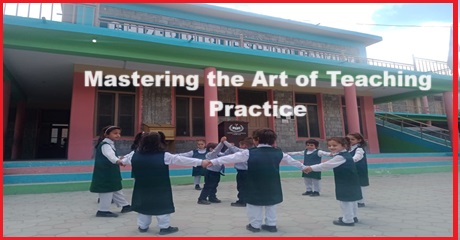Mastering the Art of Teaching Practice, Teaching practice within the classroom is more than just delivering lessons; it’s a dynamic process that involves creating an environment conducive to learning, engaging students effectively…
Strategies for Classroom Success
Mastering the Art of Teaching Practice, Teaching practice within the classroom is more than just delivering lessons; it’s a dynamic process that involves creating an environment conducive to learning, engaging students effectively, and facilitating their intellectual growth. In this article, we delve into the essential principles and strategies that educators can employ to enhance their teaching practice and foster student success.
Establishing a Positive Learning Environment
- The foundation of effective teaching practice begins with the creation of a positive and inclusive learning environment. A classroom should be a safe space where students feel respected, valued, and encouraged to express themselves freely. Building rapport with students, demonstrating empathy, and fostering a sense of community are essential in cultivating such an environment. By establishing clear expectations, promoting open communication, and celebrating diversity, teachers can create a classroom culture that promotes collaboration, creativity, and mutual respect.
Engaging Students through Varied Instructional Techniques
- One size does not fit all when it comes to teaching. Effective educators understand the importance of employing a variety of instructional techniques to engage students with diverse learning styles and preferences. From interactive lectures and multimedia presentations to group discussions and hands-on activities, teachers have a plethora of tools at their disposal to make learning meaningful and enjoyable. By incorporating active learning strategies that encourage student participation, critical thinking, and problem-solving, teachers can create dynamic and stimulating classroom experiences that captivate students’ interest and enhance their understanding of the subject matter.
Setting Clear Learning Objectives
- Clarity is key when it comes to setting learning objectives. Students need to know what is expected of them and understand the purpose and relevance of the material being taught. Clear learning objectives provide a roadmap for both teachers and students, guiding instruction and assessment and helping learners stay focused and motivated. By articulating specific, measurable, achievable, relevant, and time-bound (SMART) learning objectives, teachers can ensure that their lessons are purposeful, aligned with curriculum standards, and conducive to student success.

Implementing Differentiated Instruction
- Every student is unique, with their own strengths, challenges, and learning preferences. Effective teaching practice involves recognizing and accommodating these differences through differentiated instruction. By tailoring instruction to meet the individual needs of students, educators can ensure that all learners have equitable access to learning opportunities and are able to reach their full potential. This may involve providing additional support for struggling students, offering enrichment activities for advanced learners, or adapting instructional materials to accommodate diverse learning styles and abilities.
Assessing Student Learning
- Assessment is an integral part of the teaching and learning process. It provides valuable feedback to both teachers and students, helping to gauge student understanding, track progress, and identify areas for improvement. Effective assessment goes beyond traditional tests and quizzes; it encompasses a variety of formative and summative assessment methods that provide a comprehensive picture of student learning. By using a combination of assessment tools such as quizzes, essays, projects, and peer evaluations, teachers can gather rich and meaningful data about student performance and tailor their instruction accordingly.
Cultivating a Growth Mindset
- In addition to academic skills, teaching practice should also focus on nurturing students’ socio-emotional development and fostering a growth mindset. By encouraging resilience, perseverance, and a belief in the power of effort and perseverance, teachers can empower students to embrace challenges, learn from failure, and develop a lifelong love of learning. Cultivating a growth mindset involves praising effort over innate ability, providing constructive feedback, and creating a classroom culture that values perseverance and resilience.
Embracing Technology
- Technology has transformed the landscape of education, offering new opportunities for teaching and learning. From interactive whiteboards and educational software to online resources and virtual reality simulations, technology can enhance teaching practice and engage students in innovative ways. By integrating technology into the classroom, teachers can create dynamic and interactive learning experiences that cater to the needs and interests of digital-native students. However, it’s important to use technology judiciously, ensuring that it enhances, rather than detracts from, the learning process and that all students have access to necessary tools and resources.
Reflecting on Teaching Practice
- Finally, effective teaching practice involves ongoing reflection and professional development. Teachers should regularly reflect on their teaching experiences, analyze student feedback, and seek out opportunities for growth and improvement. In addition, identifying strengths and areas for development, setting goals, and engaging in continuous learning, educators can refine their teaching practice and make a lasting impact on student learning outcomes.
In conclusion:
- Teaching practice in the classroom is a multifaceted endeavor that requires skill, dedication, and adaptability. Finally, creating a positive learning environment, engaging students through varied instructional techniques, setting clear learning objectives, implementing differentiated instruction and assessment, cultivating a growth mindset, embracing technology, and reflecting on teaching practice, educators can enhance student success and foster a lifelong love of learning.

10 thoughts on “Mastering the Art of Teaching Practice”
Comments are closed.